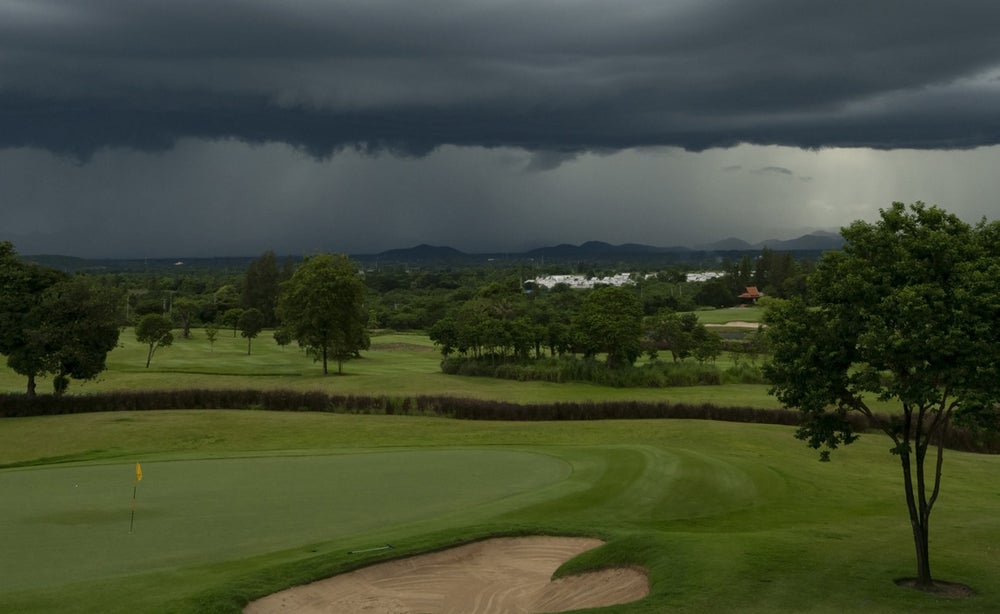Grounds for Concern

Weathering the Storm: The State of the Golf Industry
In many parts of the United States, 2018 proved to be one of the wettest—if not the wettest—years on record. Spring arrived later than usual and, once it did, seemed reluctant to leave. For many in the golf industry, the prolonged damp season overstayed its welcome despite repeated pleas for sunshine.
A late-year report from the National Oceanic and Atmospheric Administration (NOAA) confirmed what many already knew: 2018 ranked as the fifth-wettest year in the US through October. November brought record-breaking cold across several regions, including the East Coast, followed by yet more rain. Major golfing markets such as Columbus (Ohio), Wilmington (North Carolina), Wisconsin, and parts of the Washington D.C. area recorded their wettest years in more than six decades.
It was bad for golfers, and it was bad for business.
A Shifting Industry
While the broader golf industry continues to trend upward—helped by the popularity of non-traditional venues such as Topgolf—there is now greater pressure on traditional courses to meet higher expectations. If even half of the 53% of new golfers who try the sport through entertainment venues transition to green-grass golf, facilities could experience significant demand growth.
Across the nearly two million individuals employed in golf, around half work in course or facility operations. Yet, due to weather extremes and regional variability, their challenges differ dramatically.
The future of golf looks markedly different from what many industry veterans envisioned a decade ago. To attract and retain a new generation of players, facilities must deliver an experience that meets modern consumer expectations—an increasingly tall order for golf professionals and maintenance teams alike.
Weather or Not…

Unfortunately, one factor remains beyond anyone’s control: the weather. The record precipitation and temperature swings of 2018 took a toll on courses across the country, and the challenge for superintendents was not merely repair—it was preventing long-term setbacks going into 2019.
“We were cart-path-only 60% of the time in 2018,” said Zach Heiing, Assistant Superintendent at Jefferson Country Club in Blacklick, Ohio. “We only had to run irrigation on the greens twice all year, because day after day, we got hammered by rain... The past two years we’d averaged 22,000 rounds, and last year, it was a 4,000-round decrease because of weather. We were up in membership, but the rounds were down.”
While private clubs could absorb some of the impact, public courses suffered significantly from reduced play. For those relying on daily traffic, extended weather disruptions proved devastating.
Converting Curiosity into Commitment
According to the National Golf Foundation Report, 53% of people who first engage with golf through non-traditional experiences say they’re more inclined to play on a traditional course afterwards. This presents a major opportunity—if facilities can handle the increase.
“Public courses are where so many people are learning to play golf,” Heiing explained. “Golf can’t survive on country club kids, and you need a healthy public facility environment to keep interest up and keep kids playing golf. Private golf is only a fraction of the golf community."
Where’s the Workforce?
On the turf-care side of the business, staffing has become one of the biggest challenges. Rising turnover, competition from other hourly sectors, and fewer graduates entering turf programmes are leaving operations short-handed.
Heiing recalled that in the mid-2000s, his turf management class at The Ohio State University had around 50 students. Today, only a handful graduate each term.
“When you multiply that by how many golf courses there are, it’s a problem,” Heiing said. “It’s tough to find people that know what they’re doing, and that’s all the way down the board.”
Brian Wilcomb, Superintendent at Little Turtle Golf Club in Sunbury, Ohio, agreed.
“(The problem is) both getting people here and then managing them and preparing them once they’re on-site,” he said. “Turnover throughout the turf industry has been incredibly high lately and it’s become one of our bigger headaches. How do we do this more efficiently? It’s a question we’re always looking for the answer to but we can’t seem to get it.”
The growing workforce shortage has fuelled conversations about process efficiency and technology adoption to make operations more sustainable.
Tech Talk

Monitoring and adopting new technologies has become crucial for turf professionals—not only to manage unpredictable weather patterns but also to reduce dependency on limited labour.
At Jefferson CC, Heiing’s team uses GPS mapping to track moisture levels, salinity, and other critical soil metrics. At Little Turtle GC, Wilcomb’s team employs GPS-guided sprayers to optimise chemical applications and free up labour for other priorities.
“We’re looking more toward technology—and that’s definitely where the industry is going – because of how difficult it’s become to get quality labour,” Heiing said.
For many in turf management, each day brings a new challenge—sometimes quite literally overnight. That makes dependable, versatile equipment a necessity rather than a luxury.
“One of the great things about modern technology—particularly for turf professionals—is that it’s more durable and lasts longer, and while a lot of times it’s tough on the bottom line, at the end of the year you realized just how much you saved and what an impact it had on your operation,” Wilcomb said.
“You have to look at where you can trim as much fat as you can—you have to make the most of your labour,” Heiing added. “Adding two riding mowers helped us trim a couple of hours from that process. We’re looking to advanced technology to cut back on the hours and manpower we’ve lost along the way.”
Looking Ahead
The golf industry is, by most measures, in a stronger position than five years ago. Participation is rising, and non-traditional venues are introducing the game to new audiences. Traditional facilities are improving their customer experience and operational efficiency to capture this momentum.
Still, growth brings challenges—chief among them, workforce shortages and increasingly erratic weather. To support turf professionals navigating these realities, Club Car has designed innovative solutions like the Carryall 502 .
Developed through direct feedback from over 400 superintendents, the Carryall 502 integrates enhanced visibility, improved comfort, and weather-resistant features such as a monsoon canopy with drainage channels—engineered for rainy seasons like 2018.
“We’d be silly to not look to technology to try to make up for what we’ve lost in terms of labour and time [because of weather],” Wilcomb said.
With over 60 years of experience in golf and turf management, Club Car remains committed to helping facilities stay resilient—whatever the weather.
For more information or to request an on-site demonstration, contact us .
